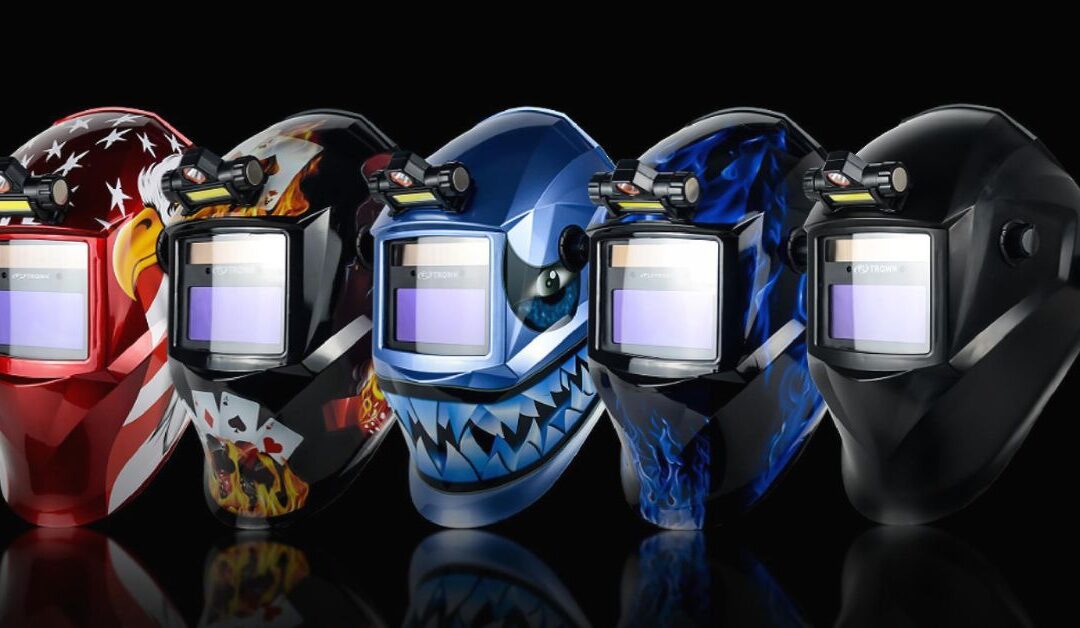
How to Choose a Welding Helmet – Welding Helmet Guide
The welding helmet is imperative for welders while doing any kind of welding operation. Therefore, it is vital to choose the best welding helmet. But many welders especially beginners don’t know what factors to consider while choosing a welding helmet. There are many advantages of using a high-quality welding helmet, it not only boosts a welder’s productivity but also keeps him safe during all kinds of welding operations.
There are many advantages to using a quality welding hood. It will protect the welder from sparks and radiation. Another great benefit of a welding helmet is that it will also help you to get better weld quality. Here we discuss how to choose a welding helmet. This article is going to be very helpful for people who want to choose a new hood for welding. Before buying a welding hood, one must know how an auto-darkening welding helmet works. It will help you to make the right decision.
Welding Helmet Working
There is intense light produced during welding operations that can be damaging to the eyes of the welder. These lights can be ultraviolet, infrared or visible. There is a lens and liquid crystal material in the welding helmet when it senses the flashing light of arc welding, it automatically changes its shade and darkens. So, the welding lens protects the eyes of the welder from flashing light. Sparks and hot molten metal can also cause burns to welders. A welder’s skin and eyes are shielded by putting on a welding hood.
A nonflammable face shield is attached to the welder’s head with an adjustable strap in the most basic helmets. A lens is enclosed within this rectangle and is protected by a safety screen. To protect the welder’s eyes from the many forms of hazardous light emitted by the arc, the lens is coated and blackened. The darker the shade during welding is better for the welder. There are different kinds of shade lenses for welding, here is the best shade lens for MIG welding.
Factors to Consider While Choosing the Welding Helmet
There are many factors that you should keep in mind while choosing a welding helmet. As all the features are vital, don’t undermine anything. You should never compromise on the quality and response time of a welding helmet. Because these are vital in choosing a welding helmet. We have also covered the best welding helmet for beginners which includes all welding helmets that are best for newbies.
Welding Helmet Should be Comfortable
If you want great results then it is vital to choose a comfortable welding helmet. It helps welders to work for a long time and produce the best results. A completely manageable head harness with various adjustment points and a balanced weight distribution ensures a custom fit. The Speedglas 9100 series welding helmets are highly compatible with a variety of extra neck covers, head coverings and welding earmuffs.
Welding Helmet Should Be Versatile
Because no two jobs are alike, a welding helmet should be adaptable to a variety of conditions. Consider a welding helmet that is customized to your specific needs and job requirements. Whether you need overhead security, a flip-front visor for regular grinding and dependable respite. Here is an excellent quality versatile welding helmet for professionals.
Consider the Type of Lens
The type and quality of the lens are some of the most critical components when choosing a welding helmet. Passive lenses are typically made of polycarbonate plastic while auto-darkening lenses are typically composed of liquid crystal display glass. Auto-darkening lenses are preferred because they offer more utility and productivity than their passive equivalents.
The visual clarity of the surrounding environment is important to welders. So, they must know how to clean welding helmet lenses. A large viewing area welding hood is preferable. Therefore, welders typically choose a welding helmet with a larger viewing area.
While choosing a welding helmet there also come some questions in the mind of the buyer will the workpiece be visible to me while welding? Is it possible for me to see the welding object during and after the welding process? If you buy a good welding hood, you don’t need to worry about it.
Auto-Darkening Lens
You can resolve the visibility issues by using an auto-darkening lens. When not in use, an auto-darkening lens has a shade of #3 or #4, which is reasonably light and easy to look through. When the sensors on the helmet detect an arc, the lens immediately darkens to shades # 8 to # 13 in a fraction of a second.
Because the auto-darkening welding helmet stays in position before, during and after the weld. These are some of the benefits of auto-darkening welding helmets that’s why people love to choose such types of welding helmets. We have also covered the difference between auto-darkening and passive welding helmets.
True Color
Auto-darkening lenses enable a broader range of visible light via filter, which is a relatively new advancement in optics technology. This technique is referred to as “true color” or “real color.” The buyer should know in which state of the helmet the true-color characteristic appears. Some manufacturers emphasize genuine color in the inactive state. When the sensors in an auto-darkening helmet do not detect an arc, it enters into an inactive state.
The auto-darkening shade is frequently a #3 or #4 in the inactive state, which is already quite transparent. The benefit of real or true color is that it is preserved throughout the process. There are a lot of resources on the internet guiding about helmets. Here are some quality helmet blogs that will help you in getting reliable knowledge.
Initial Cost and Operational Expenses
It is no surprise that adding new and enhanced features will raise the price of a helmet so, the initial cost is a major consideration when selecting a welding helmet. Therefore, it is vital to choose a helmet that is cost-effective and has all the necessary features. We have also covered the best welding helmets under $200 which includes excellent welding helmets. One thing that you should never compromise is the quality of the welding helmet. Because if you buy a cheap welding helmet you are saving money but it will cost more in the long run.
Reaction Time of the Welding Helmet
When welding begins, the lens switches frequency according to the light emitted which is known as reaction time. It relates to how fast a lens changes its state from the initial state to a shade number 3 or 4. It is measured in fractions of a second up to a millionth of a second.
If your job is to do welding for hours, a lazy switching welding helmet may cause inconvenience at the end of the day. If that’s the scenario in your case and you’re wondering how to choose an excellent welding helmet. Buying a welding helmet with intermediate or professional switching speeds is a fantastic choice.
Read More: Best Cool Welding Helmets
Battery, Solar Powered or Both
Auto-darkening helmets are available in several power sources. Some variants contain non-replaceable internal batteries and some with solar assist panels. Others feature solar aid panels and removable batteries. Some have lithium batteries, which are excellent for longer battery life. Some solar-assist helmets require charging from direct sunlight before they can be utilized.
Lithium batteries are considerably more expensive. The choice here is probably a personal one, but AAA battery-operated is the best option for wide availability and low replacement costs. Choose lithium for longer battery life.
Consider Safety Standards While Choosing a Welding Helmet
Regardless of the kind of welding procedure, welders must prioritize the use of excellent personal protection equipment and safe welding techniques. Eye, face, hand and body protection are all examples of welding PPE. Although there is no need for safety glasses under the welding helmet. Furthermore, the welding area has proper ventilation and respiratory security.
Safety and compliance are two of the most important characteristics of any helmet. Welding helmets must fulfil ANSI requirements in the United States, and CSA compliance is required in Canada. A welder can also protect his face from sunlight by wearing a helmet hood.
Conclusion
We have discussed some critical factors you should consider before choosing the best welding helmets. After reading the complete article, now you are in a strong position to choose an excellent welding helmet. A lightweight helmet puts less stress on the user’s neck, which reduces fatigue and improves comfort.
The latest auto-darkening helmets typically include features such as aluminium heat safety to secure the lens from high heat (300+ amps) applications, silver coloration to reflect heat far away from the welder, gaskets for shock intake and increased longevity. These are some features that one must consider while buying a welding helmet.

James is a welding expert, accomplished author, and trusted guide with over 8 years of experience in the industry. With his in-depth knowledge and engaging writing style, James has become a true authority in the field, offering readers and clients invaluable expertise and insights to take their welding skills to new heights.




